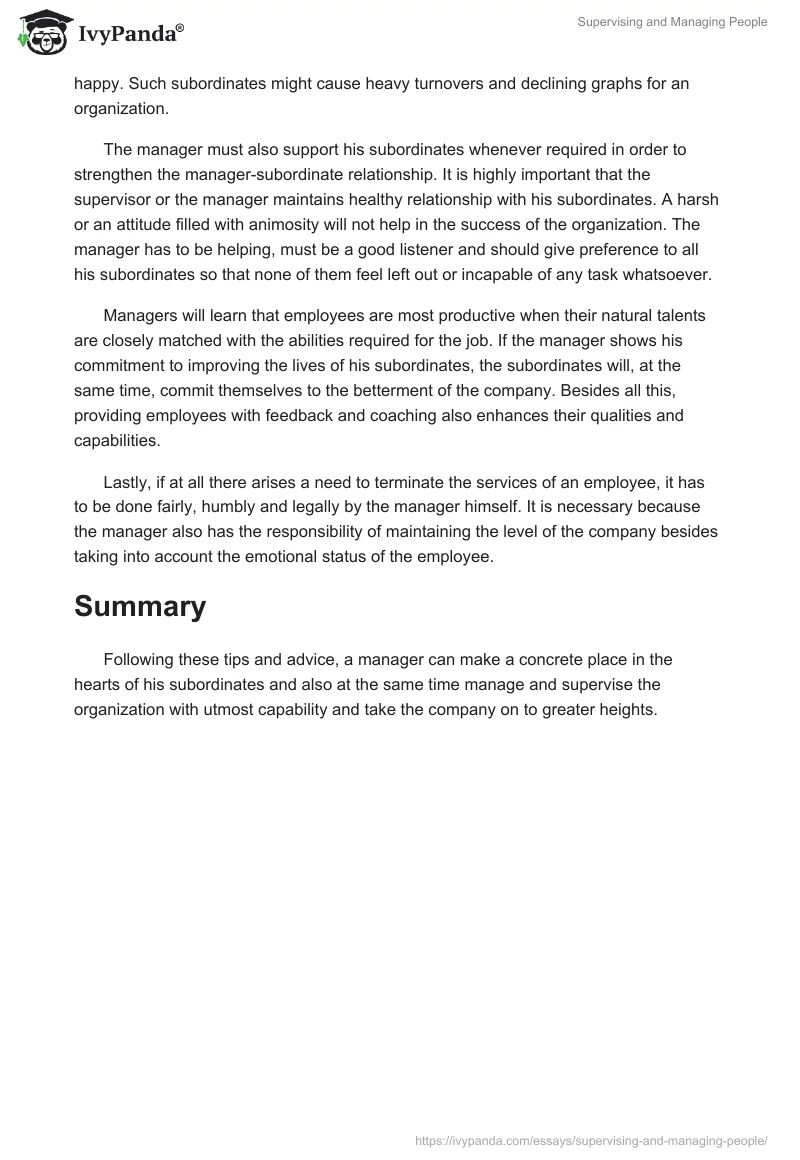Introduction
The process by which a manager synchronizes the activities of different departments is known as coordination. Coordination is the force that binds all the other functions of management. The need to supervise and manage people is a key factor in taking the company or any organization to greater heights. The supervisors and managers are responsible for the smooth working of their organization.
Management helps in achieving group goals, i.e. the manager provides a common goal to all his employees in achieving the overall goal. The main aim of the manager or a supervisor is to increase the productivity and lessen the costs incurred which are also one of the major responsibilities of the manager. The subordinates must feel that their manager is their champion and has the capability to spur them on to greater heights. One of the major contributions a manager or a supervisor can make in building a strong organization is through communication with his/her subordinates.
Main text
Without communication, proper understanding cannot be developed and would hamper the smooth working of a company.
Managing is indeed a very difficult task. A different response of the subordinates to different levels of pressure and work is a difficult thing to evaluate.
Also, there is a wide difference between male and female subordinates. Their feelings and ability to cope with any situation must be considered at every level of management and supervision. Extroverts would respond to any job outwardly without any second thoughts. On the other hand, subordinates who are introverts would have some second thoughts and would also be thoughtful and reflective. The manager must also take these kinds of reactions into account.
The supervisor is responsible for helping his subordinates to grow and develop. A happy and satisfied subordinate will deliver better results as compared to one that is not happy. Such subordinates might cause heavy turnovers and declining graphs for an organization.
The manager must also support his subordinates whenever required in order to strengthen the manager-subordinate relationship. It is highly important that the supervisor or the manager maintains healthy relationship with his subordinates. A harsh or an attitude filled with animosity will not help in the success of the organization. The manager has to be helping, must be a good listener and should give preference to all his subordinates so that none of them feel left out or incapable of any task whatsoever.
Managers will learn that employees are most productive when their natural talents are closely matched with the abilities required for the job. If the manager shows his commitment to improving the lives of his subordinates, the subordinates will, at the same time, commit themselves to the betterment of the company. Besides all this, providing employees with feedback and coaching also enhances their qualities and capabilities.
Lastly, if at all there arises a need to terminate the services of an employee, it has to be done fairly, humbly and legally by the manager himself. It is necessary because the manager also has the responsibility of maintaining the level of the company besides taking into account the emotional status of the employee.
Summary
Following these tips and advice, a manager can make a concrete place in the hearts of his subordinates and also at the same time manage and supervise the organization with utmost capability and take the company on to greater heights.


